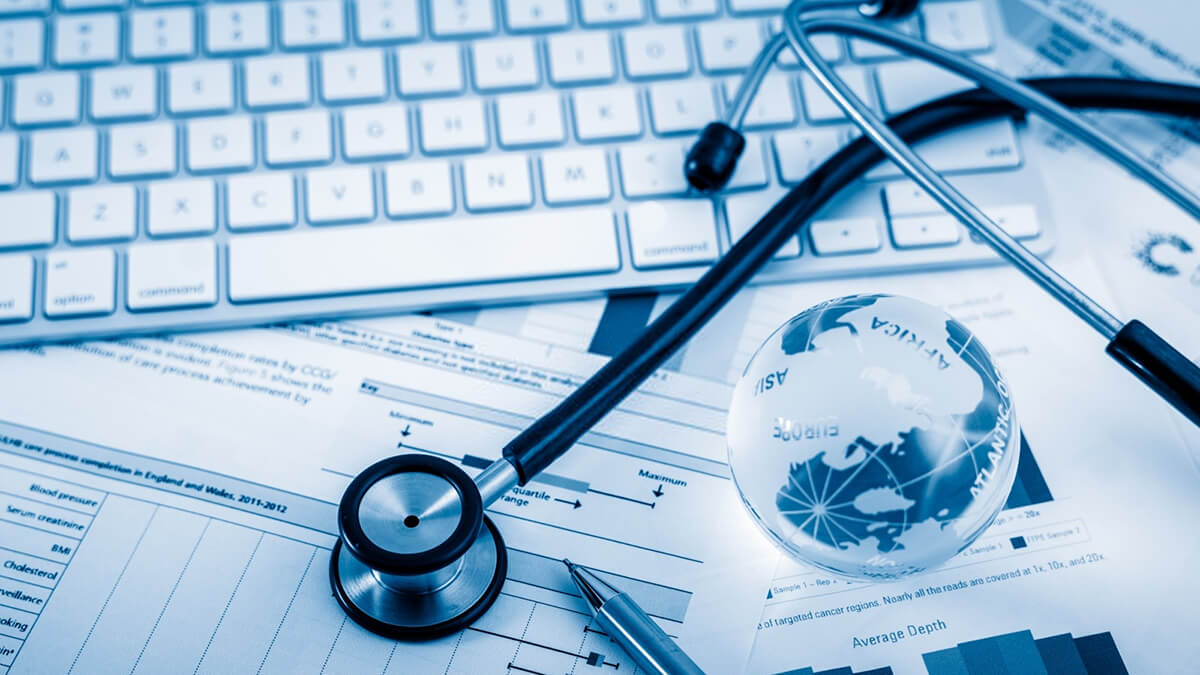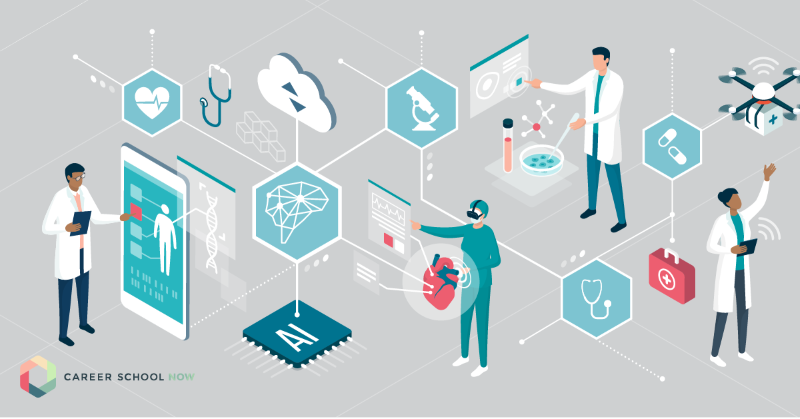Medical Administration Careers: Discovering Work Opportunities and Incomes
Medical Administration Careers: Discovering Work Opportunities and Incomes
Blog Article
Finest Practices in Medical Management for Improving Effectiveness and Decreasing Prices
In the ever-evolving landscape of medical care, the quest of best techniques in clinical management is vital for boosting performance and suppressing expenditures. By incorporating innovative modern technologies such as digital wellness records and telemedicine, health care companies can simplify operations and enhance client care. Nonetheless, innovation alone is not a panacea; optimizing resource allocation and promoting collective interaction among treatment teams are just as critical (medical administration). As organizations strive to stabilize quality and cost, what approaches should be prioritized to attain these dual goals? The solutions to these inquiries hold the secret to a more sustainable healthcare system.
Leveraging Advanced Technology
In today's rapidly advancing health care landscape, leveraging advanced technology is no much longer optional but essential for effective clinical administration. The combination of electronic services into medical care systems has actually changed the method facilities operate, enhancing processes and enhancing client care. Electronic Health Records (EHRs) are essential, giving detailed individual data that can be accessed promptly by licensed workers, therefore minimizing redundancy and minimizing mistakes. By systematizing individual info, EHRs get rid of the demand for difficult documentation and promote seamless interaction among doctor.
Telemedicine is another technological development that has actually revolutionized person communication. It offers benefit for both clients and healthcare professionals by making it possible for remote examinations, which can minimize the need for in-person sees and maximize appointment scheduling. Furthermore, telehealth systems can prolong healthcare accessibility to rural or underserved locations, linking voids in care distribution.
Moreover, the usage of Expert system (AI) and device learning is coming to be increasingly widespread in predictive analytics, permitting early discovery of possible health and wellness issues and more informed decision-making. These modern technologies, when incorporated effectively, can boost diagnostic precision and customize client treatment strategies, eventually causing boosted healthcare end results and functional effectiveness.
Optimizing Resource Allotment
Reliable resource allotment is crucial for making best use of the effectiveness of clinical management. By strategically handling resources such as personnel, equipment, and financial resources, health care facilities can significantly enhance their functional efficiency, enhance person outcomes, and minimize unnecessary expenses. The initial step in maximizing source appropriation includes carrying out a comprehensive analysis of existing properties and recognizing locations where sources might be underutilized or overextended. This assessment should be data-driven, using metrics and analytics to notify decision-making processes.
Focusing on resource allowance based on person demands and solution demands is vital. This includes straightening sources with high-demand areas, such as emergency situation treatment or specialized therapies, to make certain timely and effective individual treatment. Applying versatile staffing designs can additionally maximize labor resources by readjusting workers allotment in reaction to fluctuating person quantities. Furthermore, welcoming telemedicine and other technical remedies can relieve physical source restraints by using different methods for patient-provider interactions.
Funds need to be meticulously kept an eye on and designated with calculated insight to support both short-term operational requirements and lasting institutional goals. This consists of investing in training programs that improve team expertises and taking on energy-efficient methods that decrease operational costs (medical administration). Inevitably, a maximized resource appropriation method fosters a sustainable medical care atmosphere that is receptive, efficient, and monetarily prudent
Streamlining Process Procedures
When healthcare facilities purpose to boost functional effectiveness, enhancing workflow procedures comes to be a critical emphasis. Reliable operations minimize redundancy, remove unnecessary actions, and improve control among health care professionals. This method not just increases solution shipment yet likewise boosts the top quality of client treatment.

Next, technology combination plays a substantial function in improving process. Applying digital wellness records (EHRs) and digital physician order access (CPOE) systems minimizes paperwork, minimizes human error, and makes certain info is easily accessible to all pertinent personnel. Additionally, leveraging telemedicine systems can streamline patient assessments and follow-ups, decreasing the stress on physical why not look here infrastructure.

Eventually, streamlined process lead to set you back decreases and enhanced client fulfillment, promoting an extra lasting healthcare environment.
Enhancing Information Management
Structure upon structured operations, enhancing information monitoring becomes an essential element in progressing health care management. Effective information monitoring systems are vital for keeping precise client records, enhancing decision-making, and making sure conformity with regulative criteria. By implementing durable information administration services, health care facilities can improve the high quality of patient treatment while simultaneously lowering operational prices.
One trick facet of improving data administration is the integration of advanced electronic health and wellness document (EHR) systems. These systems assist in the smooth exchange of person details throughout various divisions, minimizing replication of tests and minimizing errors. A properly designed EHR system sustains data analytics, enabling doctor to identify patterns and make educated decisions concerning patient care.
Moreover, guarding individual information is paramount. Adopting thorough cybersecurity steps, including encryption and routine audits, makes sure the honesty and privacy of delicate information. This not only protects people however also preserves the establishment's track record.
Spending in personnel training is an additional critical variable. Educating medical care professionals on information management methods enhances their capability to successfully utilize innovation, bring about boosted patient end results. To conclude, boosting data management with advanced modern technology and extensive training is necessary for achieving effectiveness and expense decrease in medical management.
Fostering Collaborative Interaction
A critical element beforehand clinical administration is cultivating collective interaction among health care check my source professionals. Efficient interaction is critical for ensuring smooth client care, enhancing therapy outcomes, and reducing errors. By motivating open dialogue and coordination across multidisciplinary groups, medical care companies can enhance their functional performance and lower unnecessary costs.
Central to this approach is the assimilation of communication innovations such as digital health and wellness documents (EHRs) and safe and secure messaging platforms, which promote the fast exchange of essential client information. These devices enable doctor to accessibility and share data in real time, ensuring that all staff member are educated and straightened in their decision-making procedures. Moreover, regular team conferences and interdisciplinary rounds can even more promote a culture of partnership and accountability.
Educating programs focused on enhancing interaction abilities are also vital. These programs can assist staff create the capability to communicate details plainly and pay attention proactively, therefore decreasing misconceptions and fostering an encouraging job environment. Additionally, taking on standardized interaction methods, such as SBAR (Situation, History, Evaluation, Recommendation), can streamline the exchange of info, guaranteeing that important details are shared succinctly and successfully. Eventually, promoting collective interaction brings about improved medical care distribution and price financial savings (medical administration).

Conclusion
Incorporating advanced innovation, such as electronic health and wellness records and telemedicine, along with optimized source allowance and structured workflow processes, is important for improving effectiveness in medical administration. Efficient data management and promoting collaborative communication amongst health care groups are vital for decreasing redundancies and enhancing care high quality. By focusing on preventive care and taking part in top quality improvement campaigns, health care organizations can accomplish substantial price savings and enhanced individual end results, thus ensuring lasting medical care shipment in a progressively complex setting.
Report this page